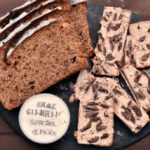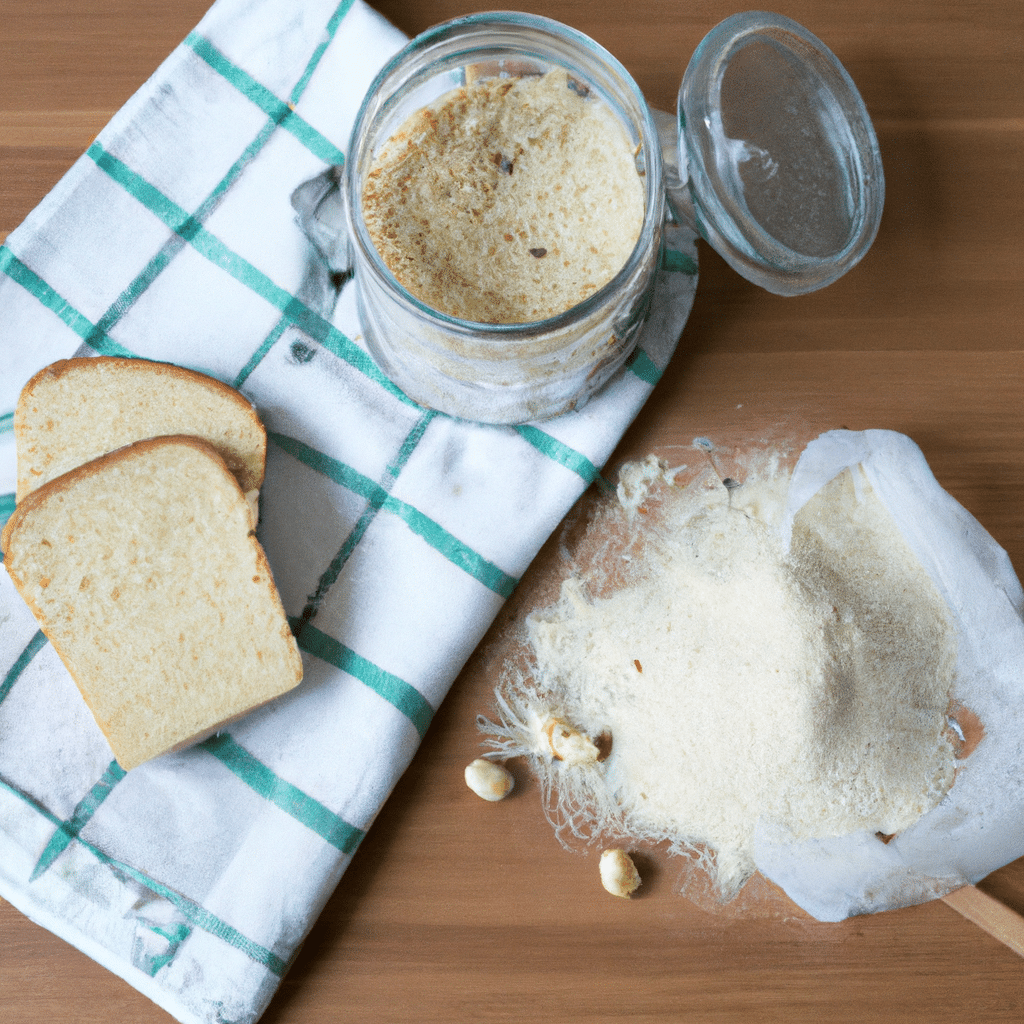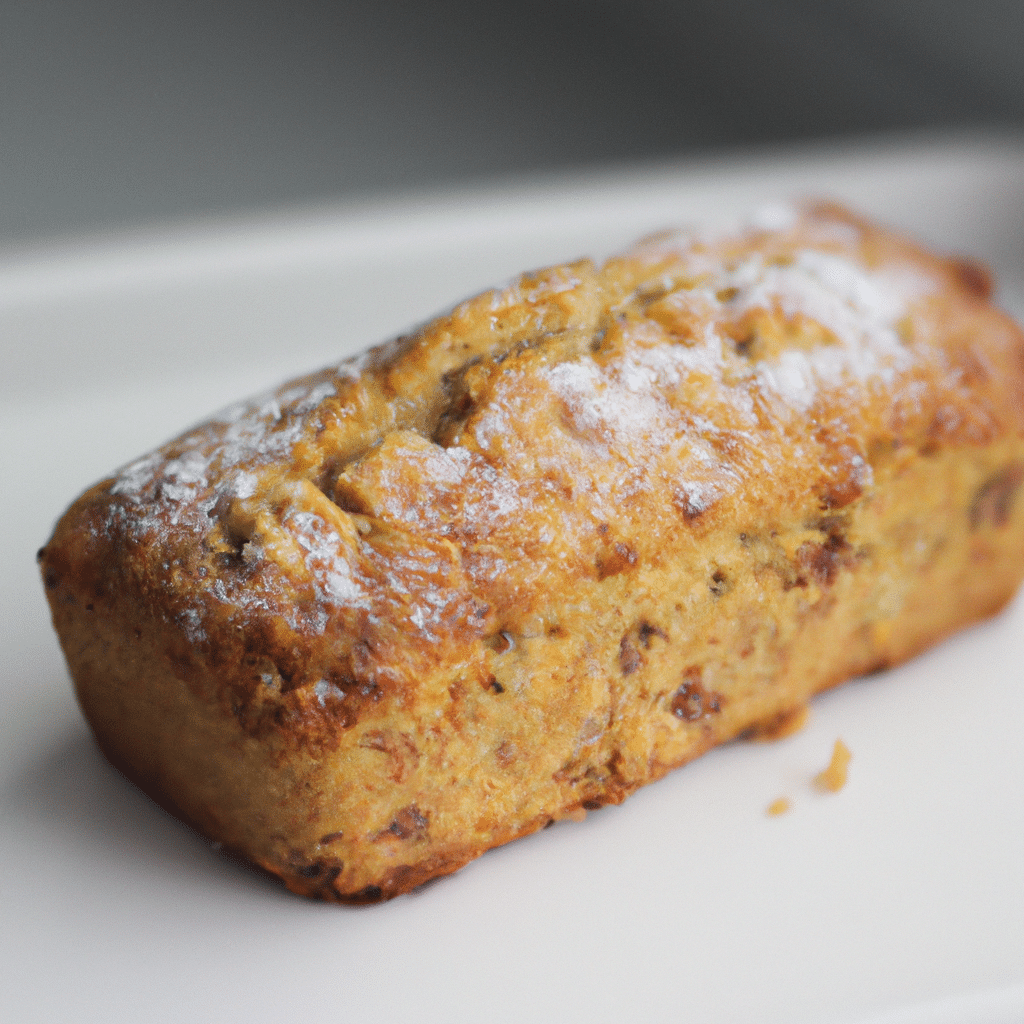Converting baking recipes to gluten-free can be a daunting task for many. However, with the right knowledge and techniques, it is possible to create delicious gluten-free treats that rival their traditional counterparts. In this article, we will explore various tips and tricks to help you successfully convert your favorite baking recipes to gluten-free versions. So, whether you have celiac disease or simply prefer a gluten-free diet, read on to discover how you can still enjoy your favorite baked goods without compromising on taste or texture.
- 1. Introduction
- 1.1. Understanding gluten-free baking
- 1.2. Benefits of converting baking recipes to gluten-free
- 1.3. Challenges of converting baking recipes to gluten-free
- 1.4. Importance of accurate measurements in gluten-free baking
- 1.5. Tips for successful gluten-free baking
- 2. Understanding Gluten-Free Ingredients
- 2.1. Gluten-free flours
- 2.2. Alternative binders for gluten-free baking
- 2.3. Sweeteners for gluten-free baking
- 2.4. Egg substitutes in gluten-free baking
- 2.5. Using xanthan gum or guar gum in gluten-free recipes
- 3. Converting Baking Recipes to Gluten-Free
1. Introduction
When it comes to baking, there’s something truly magical about the aroma of freshly baked goods wafting through the kitchen. But for those who have to follow a gluten-free diet, the joy of baking can be a bit more challenging. Luckily, with a few simple tweaks and substitutions, it’s possible to convert your favorite baking recipes to gluten-free versions without compromising on taste or texture. In this article, we will explore some handy tips and tricks on how to successfully convert baking recipes to gluten-free, so you can continue enjoying delicious treats that are safe for your dietary needs.
1.1. Understanding gluten-free baking
Gluten-free baking has gained immense popularity in recent years, as more and more people are discovering the benefits of a gluten-free diet. Whether you have celiac disease, gluten intolerance, or simply prefer to avoid gluten for health reasons, understanding the basics of gluten-free baking is essential.
Gluten is a protein found in wheat, barley, rye, and other grains. It provides elasticity and structure to baked goods, giving them a soft and chewy texture. However, when baking gluten-free, it is necessary to find alternative ingredients that can replicate the same texture and structure.
The process of converting baking recipes to gluten-free requires careful consideration and experimentation. It is not as simple as replacing regular flour with gluten-free flour. Different gluten-free flours have unique properties and may require additional ingredients or adjustments in quantities.
In this article, we will explore the fundamentals of gluten-free baking and provide useful tips on how to successfully convert your favorite baking recipes to gluten-free versions. Whether you are a seasoned baker or just starting out, this guide will help you navigate the world of gluten-free baking with confidence and achieve delicious results.
1.2. Benefits of converting baking recipes to gluten-free
Converting baking recipes to gluten-free has become increasingly popular in recent years, and for good reason. Gluten is a protein found in wheat, barley, and rye that can cause digestive issues and allergic reactions in some individuals. By eliminating gluten from recipes, those with gluten sensitivities or celiac disease can still enjoy delicious baked goods without any adverse side effects. Additionally, converting baking recipes to gluten-free opens up a whole new world of culinary possibilities for individuals with dietary restrictions. They can now indulge in a wide variety of breads, cakes, cookies, and pastries that are just as tasty and satisfying as their gluten-filled counterparts. In this article, we will explore the benefits of converting baking recipes to gluten-free and provide some helpful tips on how to successfully make the switch.
1.3. Challenges of converting baking recipes to gluten-free
Converting baking recipes to gluten-free can be a challenging task. Gluten, a protein found in wheat, barley, and rye, provides the structure and elasticity in traditional baked goods. When removing gluten from a recipe, it can be difficult to achieve the same texture and taste. Additionally, gluten-free flours and ingredients often behave differently than their gluten-containing counterparts, requiring adjustments to achieve the desired results. In this article, we will explore the challenges faced when converting baking recipes to gluten-free and provide helpful tips and techniques to overcome them.
1.4. Importance of accurate measurements in gluten-free baking
Accurate measurements play a crucial role in gluten-free baking. When converting baking recipes to gluten-free, it becomes even more important to ensure precise measurements of ingredients. Gluten, a protein found in wheat, barley, and rye, gives structure and elasticity to baked goods. However, gluten-free baking relies on alternative ingredients and techniques to achieve similar results. Thus, accurate measurements become essential to maintain the proper balance of ingredients and achieve desired textures and flavors in gluten-free baked goods. In this article, we will explore the importance of precise measurements in gluten-free baking and provide useful tips on converting regular baking recipes to gluten-free ones.
1.5. Tips for successful gluten-free baking
Gluten-free baking can be a challenging task, especially for those who are new to the world of gluten-free cooking. However, with the right tips and techniques, you can successfully create delicious gluten-free baked goods that are just as tasty as their traditional counterparts. In this section, we will provide you with some valuable tips for successful gluten-free baking, helping you to convert your favorite baking recipes into gluten-free versions.
2. Understanding Gluten-Free Ingredients
When it comes to converting baking recipes to gluten-free, understanding the different gluten-free ingredients is essential. Gluten is a protein found in wheat, barley, and rye, which gives bread and other baked goods their structure and elasticity. For those who follow a gluten-free diet due to celiac disease or gluten intolerance, finding suitable alternatives is crucial.
There are various gluten-free flours and starches available that can be used as substitutes for wheat flour in baking. Some commonly used gluten-free flours include rice flour, almond flour, coconut flour, and tapioca flour. These flours can be used alone or in combination to achieve the desired texture and taste in gluten-free baked goods.
In addition to flours, there are other ingredients that can help enhance the texture and structure of gluten-free baked goods. Xanthan gum and guar gum are often used as binders and thickeners in gluten-free baking. They help replace the role of gluten in providing elasticity and preventing the goods from becoming crumbly.
It’s important to note that when converting a recipe to gluten-free, it may require some experimentation and adjustments to achieve the desired results. The ratios of gluten-free flours, starches, and binders may vary depending on the recipe and personal preferences.
By understanding the different gluten-free ingredients and their functions, you can successfully convert baking recipes to gluten-free while still enjoying delicious and satisfying treats.
2.1. Gluten-free flours
Gluten-free flours are essential ingredients for those following a gluten-free diet or dealing with gluten sensitivities. These flours are made from various non-gluten-containing grains, nuts, seeds, and legumes, providing a safe alternative for individuals who cannot tolerate gluten. Understanding gluten-free ingredients is crucial when it comes to converting baking recipes to gluten-free versions. By being familiar with different gluten-free flours, you can successfully recreate your favorite baked goods without compromising taste or texture. Let’s explore some popular gluten-free flours and their unique properties.
2.2. Alternative binders for gluten-free baking
When it comes to gluten-free baking, finding suitable binders is essential for achieving the right texture and structure in your baked goods. While traditional baking relies on gluten to provide elasticity and hold ingredients together, gluten-free baking requires alternative binders that can mimic these properties. Fortunately, there are several options available that can help you create delicious gluten-free treats.
One popular alternative binder is xanthan gum. Derived from a bacteria called Xanthomonas campestris, this powdery substance is commonly used in gluten-free recipes to improve texture and prevent crumbling. Xanthan gum works by absorbing moisture and creating a sticky, gel-like consistency that helps bind the ingredients together.
Another commonly used binder is guar gum, which is extracted from the seeds of the guar plant. Similar to xanthan gum, guar gum acts as a thickening and binding agent in gluten-free baking. It helps improve the texture of baked goods and provides stability.
Psyllium husk is a natural fiber that can also be used as a binder in gluten-free baking. It is derived from the seeds of the Plantago ovata plant and is commonly used in gluten-free bread recipes. When combined with water, psyllium husk forms a gel-like substance that helps bind the ingredients together and adds moisture to the final product.
Flaxseed meal is another popular option for gluten-free baking. Made from ground flaxseeds, this ingredient is rich in omega-3 fatty acids and provides a nutty flavor to baked goods. When mixed with water, flaxseed meal forms a gel-like substance that can be used as a binder in place of eggs.
Finally, there are also commercial gluten-free binders available on the market. These binders are specifically formulated to mimic the properties of gluten and can be a convenient option for gluten-free baking. They often contain a combination of different ingredients like xanthan gum, guar gum, and starches to provide optimal binding and texture.
When using alternative binders in gluten-free baking, it’s important to follow the recommended measurements and instructions provided in the recipe. Each binder has its own unique properties, and using too much or too little can affect the final outcome of your baked goods. Experimenting with different binders and ratios can help you find the perfect combination for your gluten-free baking needs.
2.3. Sweeteners for gluten-free baking
When it comes to gluten-free baking, finding the right sweeteners is essential to achieve the desired taste and texture in your baked goods. While traditional recipes often rely on wheat-based sweeteners like white sugar and brown sugar, those following a gluten-free diet need to choose alternatives that are free from gluten-containing grains such as wheat, barley, and rye.
Fortunately, there are several sweeteners available that are suitable for gluten-free baking. Here are some popular options:
1. Honey: Honey is a natural sweetener that adds moisture and flavor to gluten-free baked goods. It can be used as a substitute for sugar in many recipes. However, keep in mind that honey has a stronger flavor than sugar, so you may need to adjust the other ingredients accordingly.
2. Maple Syrup: Maple syrup is another natural sweetener that works well in gluten-free baking. It adds a rich, caramel-like flavor to your recipes. Make sure to choose pure maple syrup without any added ingredients or preservatives.
3. Agave Nectar: Agave nectar is a sweetener derived from the agave plant. It has a low glycemic index, making it a popular choice for those watching their blood sugar levels. It can be used as a substitute for sugar in most recipes, but be aware that it is sweeter than sugar, so you may need to adjust the quantity.
4. Coconut Sugar: Coconut sugar is made from the sap of coconut palm trees. It has a mild caramel flavor and can be used as a 1:1 replacement for white or brown sugar in gluten-free baking.
5. Stevia: Stevia is a natural, calorie-free sweetener that comes from the stevia plant. It is much sweeter than sugar, so only a small amount is needed. It is available in both liquid and powder form.
When using these sweeteners in gluten-free recipes, it is important to consider their different properties and adjust the measurements accordingly. Some sweeteners may add more moisture or affect the texture of the final product. Experimentation may be necessary to achieve the desired results.
In conclusion, there are various sweeteners available for gluten-free baking that can help you create delicious and satisfying treats. Whether you choose honey, maple syrup, agave nectar, coconut sugar, or stevia, be sure to understand their unique characteristics and adapt your recipes accordingly.
2.4. Egg substitutes in gluten-free baking
When it comes to gluten-free baking, finding suitable egg substitutes can be a game-changer. Eggs play a vital role in traditional baking, providing structure, moisture, and binding properties to baked goods. However, for individuals following a gluten-free diet, eggs may not always be an option due to allergies or dietary restrictions. Fortunately, there are several effective egg substitutes that can be used in gluten-free baking.
One popular egg substitute is applesauce. Applesauce serves as a fantastic replacement for eggs in many recipes, especially in cakes, muffins, and quick breads. It adds moisture and helps to keep the baked goods tender. To substitute one egg, simply use ¼ cup of unsweetened applesauce.
Another great option is mashed bananas. Mashed bananas work particularly well in recipes that require a dense and moist texture, like brownies or banana bread. Use ½ of a mashed banana to replace one egg in your gluten-free recipes.
Flaxseed meal is another fantastic egg substitute. Mix 1 tablespoon of ground flaxseed meal with 3 tablespoons of water to replace one egg. This mixture forms a gel-like consistency, similar to eggs, and provides a binding effect in your gluten-free baked goods.
For a lighter texture in your baked goods, consider using carbonated water or club soda as an egg substitute. It works best in recipes like pancakes, waffles, or light muffins. Replace each egg with ¼ cup of carbonated water or club soda.
Lastly, if you’re looking for an egg substitute that adds both moisture and richness to your gluten-free baked goods, try using yogurt or buttermilk. Use ¼ cup of yogurt or buttermilk to substitute one egg in your recipes. These dairy-based substitutes work particularly well in recipes like cakes and cupcakes.
Experimenting with different egg substitutes can be a fun and creative way to adapt your favorite baking recipes to gluten-free versions. Keep in mind that the taste and texture may vary slightly from the original recipe, but with some trial and error, you can achieve delicious gluten-free results!
2.5. Using xanthan gum or guar gum in gluten-free recipes
When it comes to creating gluten-free recipes, understanding the role of different ingredients is crucial. Two common ingredients used to replace gluten in recipes are xanthan gum and guar gum. These gums serve as binding agents and help provide structure and texture to gluten-free baked goods.
Xanthan gum is a popular choice in gluten-free baking. It is derived from a type of bacteria called Xanthomonas campestris and is often used in small quantities as a thickening and stabilizing agent. Xanthan gum helps to mimic the elasticity and texture that gluten provides in traditional recipes.
Guar gum, on the other hand, is made from the seeds of the guar plant. It is also used as a thickening agent and has similar properties to xanthan gum. Guar gum helps improve the texture and binding of gluten-free dough and batter.
When using xanthan gum or guar gum in gluten-free recipes, it is important to follow the recommended guidelines. These gums are highly concentrated, so using too much can result in a gummy or slimy texture. It is usually recommended to use around 1/2 to 1 teaspoon of xanthan gum per cup of gluten-free flour, whereas guar gum requires slightly more, around 2 to 3 teaspoons per cup of flour.
Experimenting with different ratios of these gums can help achieve the desired texture in gluten-free baking. It’s important to note that some recipes may not require the use of gums at all, especially if they contain ingredients that naturally provide structure and binding, such as eggs or nut flours.
In conclusion, xanthan gum and guar gum are valuable ingredients in gluten-free baking. They help provide the necessary structure and texture that gluten typically offers in traditional recipes. Understanding how to use these gums correctly is essential for converting baking recipes to gluten-free ones successfully.
3. Converting Baking Recipes to Gluten-Free
Converting baking recipes to gluten-free can be a challenging task, but with the right techniques and ingredients, it is definitely possible. Gluten is a protein found in wheat, barley, and rye, which gives baked goods their structure and elasticity. However, for individuals with gluten intolerance or celiac disease, consuming gluten can cause various health issues. Therefore, it is important to know how to convert traditional baking recipes to gluten-free versions. Here are some tips to help you successfully convert your favorite baking recipes to gluten-free ones:
3.1. Analyzing the original recipe
When converting baking recipes to gluten-free, it is essential to first analyze the original recipe. Understanding the ingredients and techniques used in the original recipe will help in making appropriate substitutions for gluten-free alternatives. Here are some steps to consider when analyzing the original recipe:
1. Examine the ingredients: Take a close look at the ingredients used in the original recipe. Identify any ingredients that contain gluten, such as wheat flour, barley, or rye. These ingredients will need to be replaced with gluten-free alternatives.
2. Consider the structure: Gluten provides structure and elasticity to baked goods. Analyze how gluten is used in the original recipe to create the desired texture. This will help in choosing suitable gluten-free substitutes that can mimic the same texture and structure.
3. Note the ratios: Pay attention to the ratios of ingredients in the original recipe. Gluten-free flours may require different ratios or additional ingredients to achieve the desired consistency. Adjustments may be needed to maintain the balance of flavors and textures.
4. Evaluate the techniques: The techniques used in baking can also affect the outcome of gluten-free recipes. Consider any specific techniques mentioned in the original recipe, such as kneading or proofing, and adapt them accordingly for gluten-free baking.
By thoroughly analyzing the original recipe, you can make informed decisions and successfully convert baking recipes to gluten-free versions. This will ensure that your gluten-free baked goods turn out delicious and satisfying.
3.2. Choosing the right gluten-free flour blend
When it comes to converting baking recipes to gluten-free, one of the most important aspects is choosing the right gluten-free flour blend. With the wide variety of gluten-free flours available in the market, it can be overwhelming to determine which one to use. However, by understanding the properties of different gluten-free flours and experimenting with blends, you can find the perfect substitute for your favorite recipes.
Firstly, it’s crucial to note that gluten-free baking requires a combination of flours to achieve the best results. Using a single type of gluten-free flour often leads to a dense and gritty texture in baked goods. Therefore, it is recommended to create a blend of different flours to mimic the properties of wheat flour.
Some popular gluten-free flours include rice flour, almond flour, coconut flour, tapioca flour, and sorghum flour. Each flour has its own unique characteristics that contribute to the overall texture and taste of the final product. For instance, rice flour is a common choice for its neutral flavor and ability to create a light and fluffy texture. Almond flour, on the other hand, adds a nutty flavor and a moist consistency to baked goods.
To create your own gluten-free flour blend, start by experimenting with different ratios of these flours. A good rule of thumb is to combine a starch-based flour, such as tapioca flour or potato starch, with a protein-rich flour like almond or sorghum flour. This combination helps to achieve a balance between structure and tenderness in your baked goods.
It’s important to keep in mind that gluten-free flours may absorb more moisture than wheat flour. Therefore, you may need to adjust the liquid content of your recipes accordingly. Additionally, using a binder like xanthan gum or psyllium husk powder is often necessary to replace the binding properties of gluten.
In conclusion, choosing the right gluten-free flour blend is crucial when converting baking recipes to gluten-free. By understanding the properties of different gluten-free flours and experimenting with blends, you can create delicious and successful gluten-free baked goods.
3.3. Adjusting the leavening agents
When converting baking recipes to gluten-free, it is important to adjust the leavening agents accordingly. Leavening agents, such as baking powder and baking soda, are responsible for the rise and texture of baked goods. However, gluten-free flours and alternative ingredients may require different amounts of leavening agents compared to traditional wheat-based recipes.
Gluten-free flours tend to be denser and lack the elasticity provided by gluten. Therefore, it is necessary to increase the leavening agents to compensate for this. Here are a few tips for adjusting leavening agents when converting baking recipes to gluten-free:
1. Baking Powder: Increase the amount of baking powder by 25-50%. This will help create a lighter texture and improve the rise of the baked goods.
2. Baking Soda: Similar to baking powder, you may need to increase the amount of baking soda. However, be cautious as too much baking soda can leave a bitter taste.
3. Acidic Ingredients: If your gluten-free recipe includes acidic ingredients like buttermilk, yogurt, or vinegar, they can react with the leavening agents. Consider reducing the amount of baking powder or baking soda accordingly.
4. Test and Adjust: It is crucial to test your gluten-free recipes and make adjustments as needed. Every recipe and gluten-free flour blend might require different amounts of leavening agents.
By adjusting the leavening agents correctly, you can ensure that your gluten-free baked goods have the desired texture and rise. Experimentation and fine-tuning may be necessary to achieve the perfect results.
3.4. Modifying the liquid ingredients
Modifying the liquid ingredients is an important step when converting baking recipes to gluten-free. Since gluten-free flours and ingredients tend to absorb more liquid, adjustments need to be made to achieve the right consistency in the final product. Here are some tips for modifying the liquid ingredients:
1. Increase the liquid: Gluten-free flours, such as almond flour or rice flour, typically require more liquid compared to wheat flour. Add a bit more water, milk, or other liquids specified in the original recipe to ensure the batter or dough is not too dry.
2. Use alternative liquids: Apart from water and milk, you can experiment with alternative liquids like coconut milk, almond milk, or fruit juices to enhance the flavor and texture of your gluten-free baked goods.
3. Adjust the consistency: Pay attention to the consistency of the batter or dough. If it appears too thick or dry, gradually add more liquid until it reaches a more suitable consistency. Conversely, if it seems too runny, you can add a small amount of gluten-free flour to thicken it.
4. Test and adjust: The key to successful gluten-free baking is experimentation. It’s important to test your modified recipe and make any necessary adjustments based on the results. Keep track of the changes you make, so you can replicate the successful modifications in the future.
By modifying the liquid ingredients appropriately, you can ensure that your gluten-free baking recipes turn out moist, flavorful, and with the right texture.
3.5. Making necessary adjustments to baking time and temperature
When converting baking recipes to gluten-free, it is crucial to make necessary adjustments to the baking time and temperature. Gluten-free flours and ingredients often require different cooking conditions compared to traditional wheat-based products. Here are some tips for achieving the best results:
1. Decrease the Baking Time: Gluten-free baked goods tend to cook faster than their gluten counterparts. Start by reducing the baking time by 5-10 minutes and then check for doneness. Keep a close eye on the oven to prevent over-browning.
2. Lower the Baking Temperature: Lowering the oven temperature by about 25 degrees Fahrenheit (or 15 degrees Celsius) can help ensure even baking. This adjustment allows the gluten-free batter or dough to set properly without drying out or becoming too crispy on the outside.
3. Use an Oven Thermometer: It is recommended to use an oven thermometer to accurately measure the temperature inside your oven. Ovens can vary in accuracy, and having an oven thermometer will help you adjust the temperature accordingly.
4. Test for Doneness: Gluten-free baked goods may have a different texture and appearance compared to regular baked goods. Use a toothpick or cake tester to check for doneness. If the toothpick comes out clean or with a few crumbs, the baked goods are ready.
By making these necessary adjustments to baking time and temperature, you can successfully convert baking recipes to gluten-free and enjoy delicious gluten-free treats.
Conclusion
In conclusion, converting baking recipes to gluten-free can be a simple process with the right techniques and ingredients. By substituting gluten-free flours and making adjustments to the recipe, individuals with gluten sensitivities or allergies can still enjoy delicious baked goods without compromising on taste and texture.





